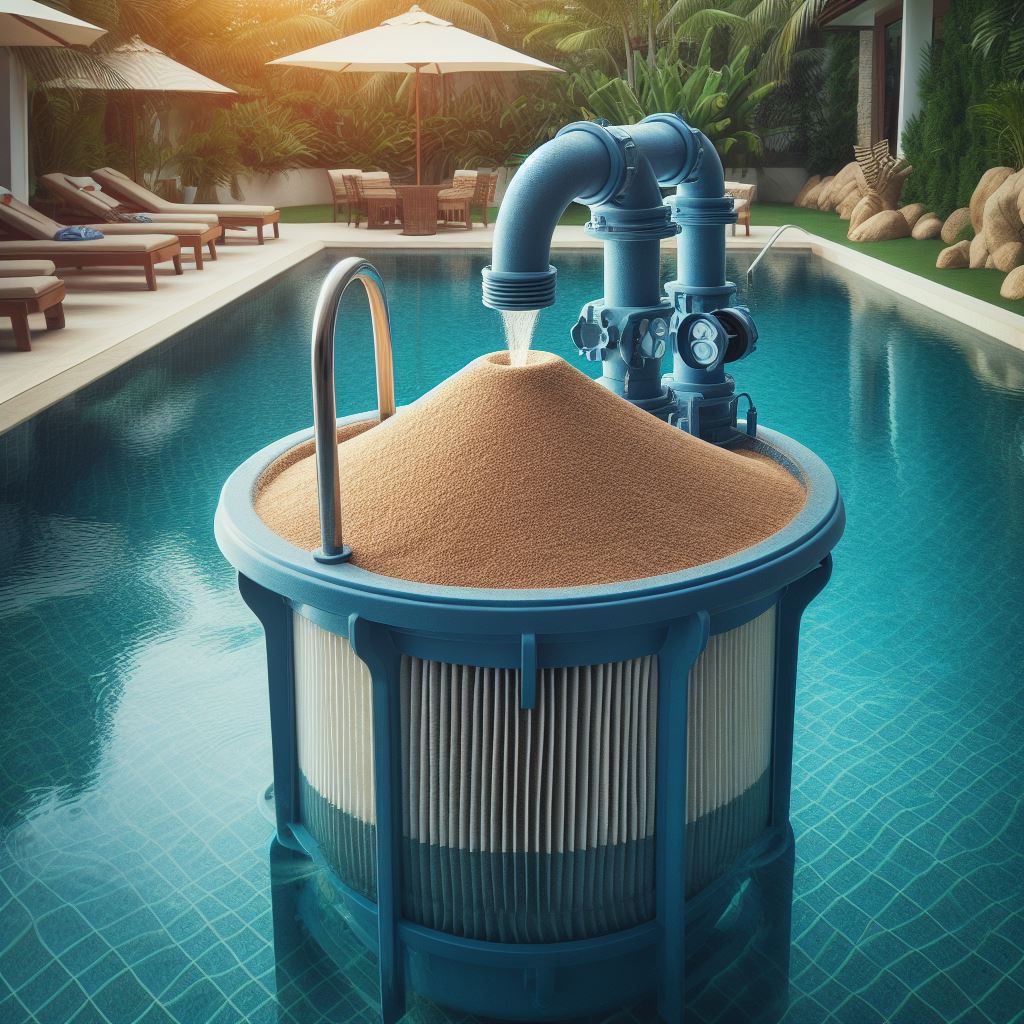+Efficient, affordable, and low-maintenance pool filtration is always our goal. You don’t want to spend all your time and money ensuring your filter works as it should. This is why you might initially opt for a sand pool filter. They rarely clog, are wallet-friendly and convenient, and work very well. You can achieve crystal clear pool water with minimal effort, only needing to replace the sand every few years.
So, how do you replace the sand in a pool filter? First, decide which type of sand you want to use—you have several options. Learn how to determine when to replace it, so you won’t constantly struggle with dirty, cloudy water. When you’re ready, replace the sand and quickly get back to swimming.

Types of Filter Sand
Silica Sand
The most commonly used pool filter sand is #20 silica sand. It comes from crushed quartz, forming sharp-edged silica particles that are great for trapping particles in flowing water. Silica sand is mined, not manufactured.
Glass Sand
For an eco-friendlier alternative, glass sand is a good choice. Made from 100% recycled glass, it is smooth to the touch but still effective at capturing particles as small as two microns. The different sizes of glass particles help minimize channelling. Glass sand also carries a negative charge, making it excellent at capturing iron and manganese particles, which is especially useful if your pool uses hard water.
Zeolite Sand
Made from a volcanic mineral called zeolite, this alternative has a spongy, honeycomb shape and offers a surface area 100 times greater than standard filter sand. Zeolite captures chloramines chemically through a process called molecular sieving. This helps control chloramines without excessive use of pool chemicals.
Pool Filter Balls
Designed to replace traditional sand in pool filters, filter balls are made from materials like polyester, polypropylene, and acrylic fibers. They are known for their high filtration strength, speed, impressive lifespan, and reusability. Filter balls are much easier to manage, significantly lighter, and improve circulation and filtration with lower pressure and higher flow rates.
Why Replace Filter Sand?
Over time, the rough surface of the sand particles gets worn down by the rushing water, making them smooth and round. This smoothness is a result of weathering, similar to how sand on a beach gets smooth due to wave action. When the filter sand becomes smooth, it loses its ability to capture and hold contaminants, causing the pool water to become cloudy and requiring more frequent shock treatments.
When to Replace Filter Sand
Like fine wine, pool filter sand improves with age but eventually peaks and declines, typically lasting only three to five years. Over time, contaminants accumulate in the sand. Initially, this accumulation enhances filtration, but eventually, the sand becomes too clogged, reducing the filter’s efficiency and the pool’s water quality.
Can I Just Clean or Backwash My Sand Filter?
Whenever the pressure gauge climbs 10 psi above the normal operating pressure, it’s time to backwash the sand filter. Backwashing flushes the sand, removing debris. If you want to give the sand extra cleaning, use a sand filter cleaner annually. However, backwashing and cleaning agents only temporarily improve pressure and water clarity. Ultimately, the sand will wear out and need replacement.
Steps to Replace Filter Sand
Shut Off Pump and Drain Filter
Remove the drain plug and allow all the water to drain from the filter tank.
Remove Multiport Valve
Disconnect hoses or pipes attached to the valve. Use a screwdriver to remove the clamps or collar holding the valve to the tank.
Cover the Standpipe
Cover the standpipe inside the tank with tape to prevent sand from entering it.
Remove Old Sand
Use a Shop-Vac to remove old sand or manually scoop it out with a plastic cup.
Rinse Tank and Laterals
Use a garden hose to rinse remaining sand and inspect the laterals for damage.
Refill the Tank with Water
Replace the drain plug and fill the tank halfway with water to cushion the laterals.
Add New Sand
Wear a mask to avoid inhaling dust. Slowly pour new sand into the tank.
Reassemble Connections
Fill the tank to the top with water, reattach the multiport valve and hoses, ensuring all fittings are tight.
Backwash and Rinse the Filter
Backwash the filter to remove dust and debris, then rinse for one minute.
Maintenance and Care
Record the normal operating pressure after replacing the sand and periodically check the pressure gauge. Backwash the filter when the pressure is 10 psi above normal. Use a sand filter cleaner to maintain efficiency but plan to replace the sand every three to five years.
Conclusion
Choosing the right type of filter sand and correctly replacing it is crucial for maintaining pool water clarity. Regular maintenance and timely replacement will keep your pool filter system running efficiently, ensuring a clean and safe swimming environment. With proper care, you can enjoy worry-free swimming for another five years.
